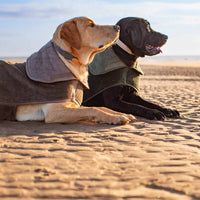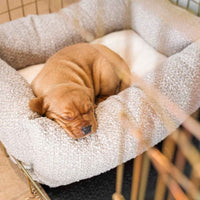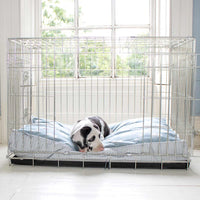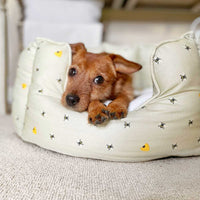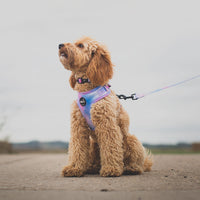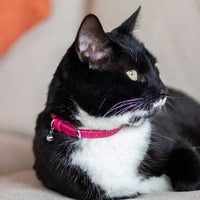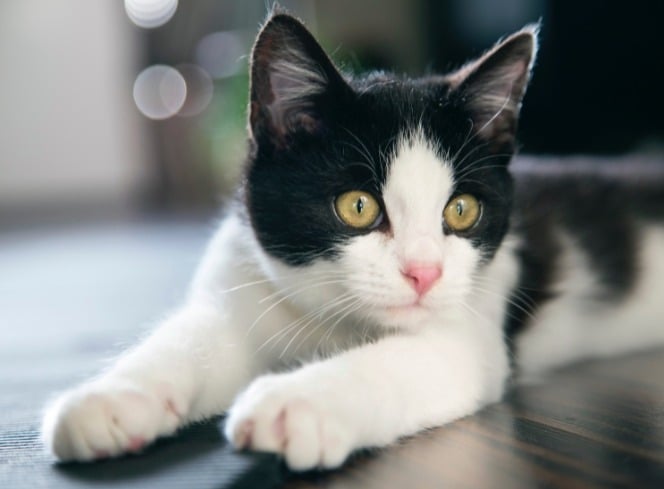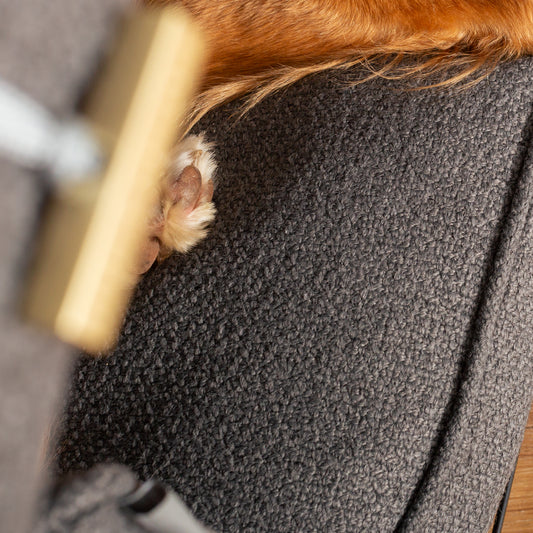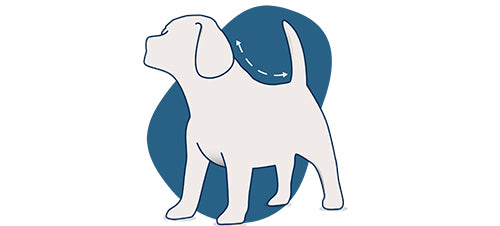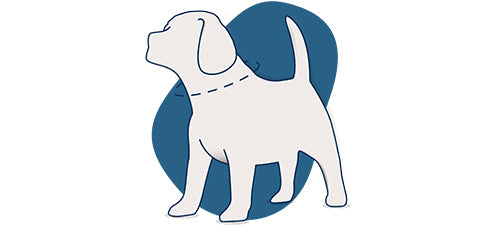Winter brings with it challenges for all dogs of all breeds and ages, but senior dogs in particular can find the Winter months rather difficult. Just like humans, dogs tend to become frailer in old age and can suffer from common conditions like arthritis and other aches and pains. Whilst it’s important to look out for, and take care of, these maladies at any time of the year, it’s especially important in the winter when symptoms are often exacerbated by the cold. Here we run through some top tips for older dogs in the Winter…
Winter Care Guide for Senior Dogs
Keep them warm
The number one priority in Winter is to help your senior dog keep warm. Older dogs naturally find it harder to regulate their body temperature. Older dogs may also suffer from arthritis and other conditions that can feel even worse in cold temperatures, so ensuring their muscles stay warm is really important.

Provide layers on their bed
As we said before, senior pets can find it hard to keep a regular body temperature at any time of the year. Cosy dog beds with faux fur toppers or self-heating capabilities are a couple of options for their winter bed. You could add extra layers in the form of pet blankets too, to make it even warmer. Provide more than one bed, with varying layers so they can choose to move if they get too hot. If your dog has mobility issues or arthritis, consider a memory foam orthopaedic bed like the one by Scruffs. The foam inner will help to support their bodies and help to lower themselves and get back up when they need to. They are ideal for dogs with any kind of joint issues.
Consider a jumper or other cold weather clothing
Even when they are in the house, some older dogs with arthritis or other ailments will benefit from a layer of clothing such as a dog jumper or fleece. When going outside they’ll probably need a coat too. Every dog will have slightly different needs, so if you’re unsure, ask your vet what kind of products they think are best.

Ensure Gentle exercise continues
Your older dog will probably require shorter walks than their younger relatives even in normal conditions. But when the weather becomes really cold it’s even more important to keep those outdoors walks short. It’s really good for your dog to get outside if possible as it gives them a chance to stretch their legs properly, get some fresh air and stimulate their senses. You might wish to read our How Cold is Too Cold to Walk Your Dog article where we discuss walking your dog in wintery conditions.
Provide Indoor Activities
This is important at any time of year for senior dogs, as you will want to keep their brains active. But in winter, it may be that some days they don’t get outside for more than ten minutes, or even at all. Providing interactive toys and games that they can do at their own pace will stimulate their minds and help to keep muscles exercised. Treat games and puzzles are both brilliant ways to keep your senior dog engaged and exercised. Try a treat stuffed KONG Wobbler or something similar that allows for gentle, stimulating fun.

Check that their diet is suitable
It’s important to make sure you’re feeding your dog the right amount of the right types of food, no matter the time of year, but it may be that this is tweaked slightly for the winter months. Whatever you do, ensure you feed a complete dog food designed especially for senior dogs which will give them the right number of calories for their size and age. There are many types available. If you want to ensure your dog is getting the right nutrients for their breed and age, you can always ask your vet for advice on the food that you’re feeding them.
Add relevant supplements to their diet
There are a number of supplements available for dogs, each designed to help a part of the body or relieve symptoms of certain conditions. Supplements can be a great addition to any dog's diet but are especially useful in older age when dogs are more likely to suffer from muscle aches and other age-related conditions. Animology produce a brilliant range of dog supplements. There is a formula specifically for senior dogs as well as other ones for Body & Hair and Hips & Joints.

Go for regular Vet check ups
Keep an eye on their condition and get regular check-ups at the Vet if you think anything has changed. As we mentioned before, it is quite normal for senior dogs to develop conditions such as arthritis. Whilst these conditions may not be ideal, there are things we can do to alleviate the symptoms. Consider trying some of the supplements that we mentioned above to help.
We hope you find our tips helpful this winter season. There’s no reason, with a little care and attention, that your senior dog can’t enjoy this time of year as much as any other.
If you have any questions about any products mentioned in the blog, please do get in touch. We're always happy to help!


























